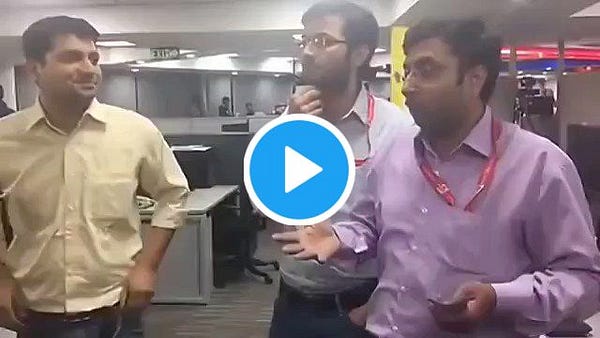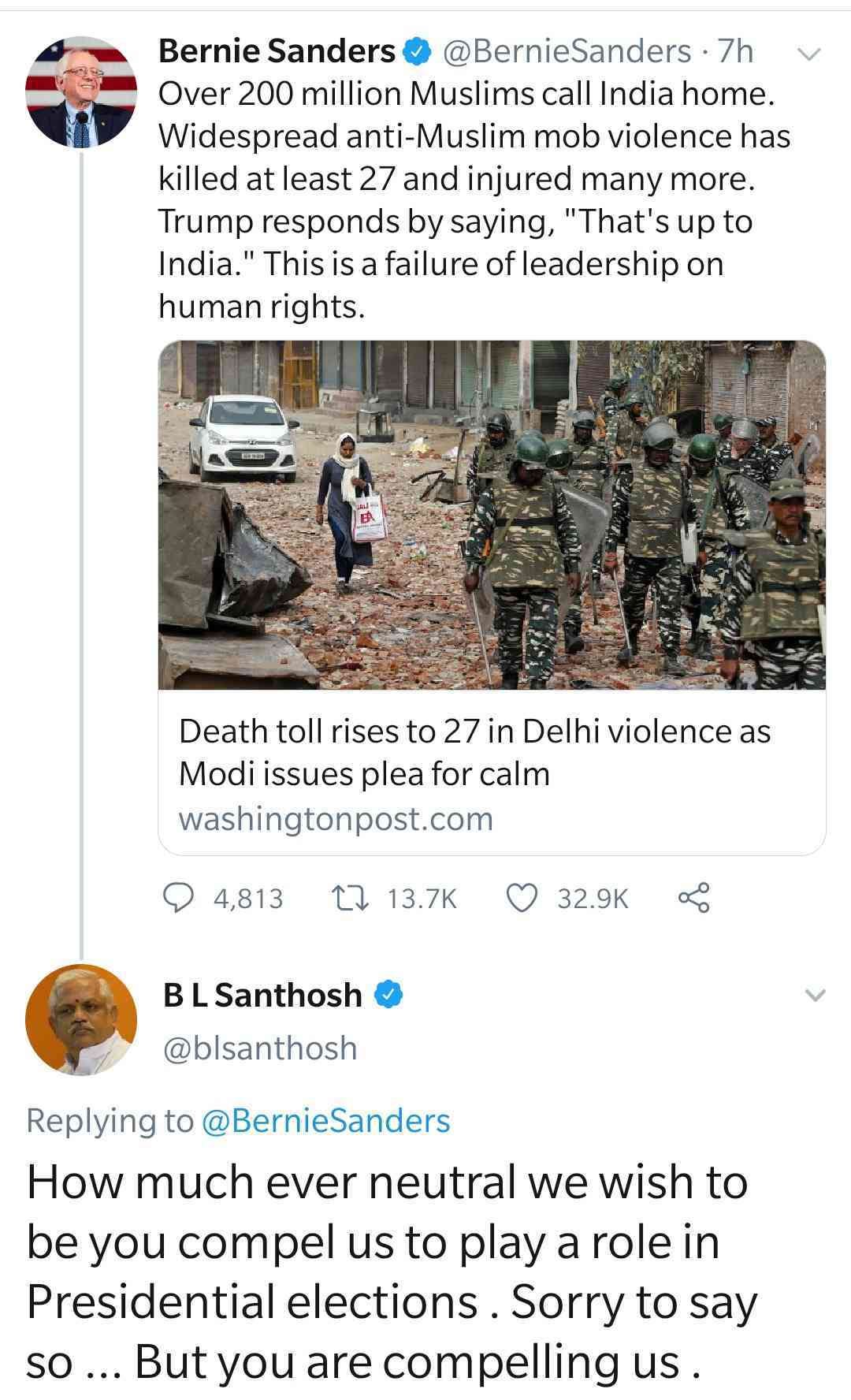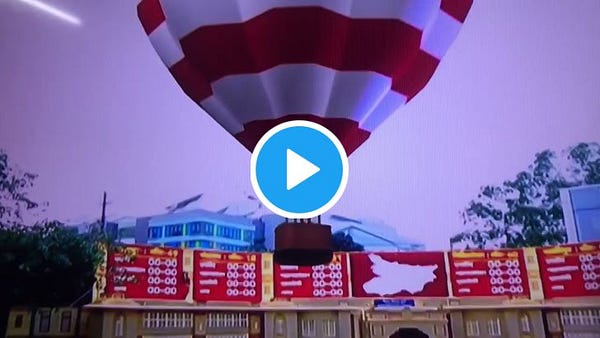The Political Fix: What does 'Goodbye Trump' mean for India – and Modi?
Plus, Bihar exit polls and more.
Welcome to The Political Fix by Rohan Venkataramakrishnan, a newsletter on Indian politics and policy. To get it in your inbox every week, sign up here.
We don’t charge for this newsletter, but if you would like to support us consider contributing to the Scroll Reporting Fund or, if you’re not in India, subscribing to Scroll+.
The Big Story: Howdy, Namaste, Salaam
What will US President Donald Trump’s defeat mean for the outcome in Bihar on November 10? Don’t worry, this newsletter is not going to down that road, as a few joked might happen on Twitter – though we will discuss exit poll numbers from Bihar below.
A few weeks ago, on the Political Fix, we already considered what a Joe Biden-Kamala Harris victory might mean for India and Prime Minister Narendra Modi. Now that the Democrats have won – despite Trump insisting otherwise – it is worth taking a relook at what this means for India.
To recap: The US elections were, to some extent, being seen through the prism of Indian domestic politics with two broad perspectives (among many others):
Modi supporters who cast the Biden-Harris ticket as “anti-India” because it had criticised the unilateral stripping of Jammu and Kashmir’s autonomy and subsequent crackdown on civil rights, as well as the Citizenship Act Amendments.
Modi critics who hoped or expected to see a Joe Biden presidency offer more public censure of the Bharatiya Janata Party government’s illiberal moves, and an expectation that the new administration might keep its distance from India, after Modi all but endorsed Trump during the campaign.
Our conclusion: Neither of these outcomes is likely. Instead, the broad expectation is that there will be continuity in ties despite the change in leadership in the US, though there may be significant difference when it comes to optics.
The Howdy Modi and Namaste Trump events, when the two leaders addressed huge stadium-sized crowds in each other’s nations, may be what we remember best when looking back at the relationship between the two leaders.
But a more relevant memory, at least as an indicator for what is likely to happen going forward, comes from just a few weeks ago.
With just days to go for the November 3 election day in the US, the American Secretary of State and Defense Secretary turned up in New Delhi to sign a major defence deal with India, as part of the 2+2 dialogue between the countries. Given the deeply polarising campaign that Trump had run, Democrats would not have hesitated to call out this late-stage effort if it was seen as yet another last-ditch effort to shore up the president’s image.
Yet the signing of the agreement went ahead without much fanfare or criticism in the US, even as Indian observers hailed the progress made between the two countries in concluding the four ‘foundational agreements’ that would allow New Delhi to become a ‘major defence partner’ to Washington, DC.
That is as clear a signal as you need of the bipartisan American consensus that supports closer ties with India, despite the Modi team’s decision to signal his preference for the Republican in the run-up to the 2020 election (and a top Bharatiya Janata Party leader telling Democratic presidential candidate Bernie Sanders on Twitter that criticism of Modi’s policies would “compel us to play a role” in US elections).
Many advisors in Biden’s orbit have called on the US to step up its engagement with India, and build on the closer defence ties that were forged in the Trump era, while bringing stability to the questions on trade and immigration that had become much more rocky over the last four years.
Nicholas Burns, a former Under Secretary of State for Political Affairs who is advising the Biden campaign, wrote along with Anja Manuel in the Hill in October calling for the US to “think bigger” when it comes to India ties.
Biden himself, in an essay earlier this year, called for “deepening partnerships from India to Indonesia to advance shared values in a region that will determine the United States’ future.”
And there is a broad consensus that the Biden White House will maintain the focus on China as the biggest threat to the global order, one of the few policy realignments under Trump that has received support from both sides. A focus on China as the principal foreign policy challenge would most likely be a key factor in pushing Washington, DC to continue engaging closely with New Delhi.
Some have even expressed hope that the Biden administration, and the re-empowering of the State Department that will likely come with it, would bring stability to the relationship again.
“Overall, the Narendra Modi government will find a Biden presidency to be less volatile, more fully staffed and relatively familiar with India,” wrote Tanvi Madan. And of course, having a person of Indian heritage in the White House might have intangibly positive effects.
So why does Indian Twitter seem so divided on the matter? It’s important to remember that Twitter anywhere is not reflective of… much. Opinions on the platform can neither be seen as representative of ordinary Indians or the policy folks who will actually engage in Indo-US ties.
At most it gives us a glimpse of how India’s elite – liberal or right-wing – are both invested in American elections, and would like to use them as a lens through which to view their own politics.
The triumph of Trump over the last few years was seen as vindication of the illiberal majoritarian approach couched in the language of anti-elite populism that Modi also embodies. The fact that the two not only got along, but held openly political public rallies together only reinforced this notion.
Trump’s defeat, as a result, gives ammunition to the other side.
It may not mean anything for Indian politics, aside from a Democratic leadership that might be more willing to bring up questions of civil and human rights abuses by the state in India. But it is seen as a message to illiberal political leaders everywhere, as well as a sign to liberal leaders that mimicking the other side isn’t the answer.
“Indians will recognise this argument as a close cousin of the notion that Modi’s popularity makes majoritarian hostility towards minorities a politically respectable attitude that the Opposition parties should pander to. It is one thing to be swayed by this bogus argument when you are backed up against a wall by a political juggernaut (the plight of non-feral parties in India); quite another to pay it any attention after you have won the biggest prize in American politics.
In contemporary democracies, parties of the centre or the left defeated by right-wing strongmen like Trump, Duterte, Orbán, Modi, Rajapaksa or Bolsonaro know that they have to persuade some part of their base to switch sides. So they have to assume that people can vote for bigots without being bigots themselves.
But this doesn’t mean that liberal parties begin to remake themselves in the image of their opponents. No matter how successfully Trump galvanized voters with talk of rapist illegals from Mexico, Democrats can’t go there. To durably defeat a malignant populist, liberals need to spell out a benign populism.
That is where the Democrats are today.”
Flotsam and Jetsam
Bihar had its third and final phase of elections on November 7, with a total turnout of around 56%. Once voting had ended, exit polling data was released, suggesting that the election results are going to be closer than the opinion polls and general narrative had suggested earlier this year.
From the belief that this would be a cakewalk for the ruling BJP-Janata Dal (United) coalition, the exit polls suggest the results will be neck-and-neck, with all suggesting at least a slight edge for the Rashtriya Janata Dal-Congress alliance, and in one case – Today’s Chanakya – a severe drubbing for the incumbents. Results are on November 10. Poll of exit polls predicts win for Tejashwi-led Grand Alliance in Bihar. #BiharExitPolls LIVE updates: toi.in/vYk03Z #ElectionsWithTimes #BiharPolls
Poll of exit polls predicts win for Tejashwi-led Grand Alliance in Bihar. #BiharExitPolls LIVE updates: toi.in/vYk03Z #ElectionsWithTimes #BiharPolls
Exit poll data was also released for bye-polls taking place in a number of states, with the most significant being in Madhya Pradesh, where results could have had an impact on whether the BJP – which came back to power earlier this year through defections, despite having lost the elections in 2018 – would remain in charge. The exit polls suggest that the BJP will indeed remain at the helm.
Neither goods nor passenger trains have restarted operations in Punjab, after stopping in September due to farmer unrest over the Union Government’s agricultural laws were passed. The result appears to be a state that is running out of coal stocks, potentially leaving millions without power, as Punjab politicians blame the Centre for a ‘rail blockade.’ The railways meanwhile, says it is unwilling to only restart freight trains if the security of staff can’t be assured.
India and Chinaare still talking, though there has been little movement of positions in months, after Beijing’s troops occupied land that was earlier being patrolled by Indian soldiers.
Even though the national number of Covid-19 cases continues to drop, Delhi is seeing a third-wave – worse than the first two – amid fears that the festive season will see a spike in cases around the country. Diwali is on November 14.
Can’t make this up
Since it has been four years since demonetisation, Modi’s flagship move to withdraw and replace 86% of India’s currency that was devastating for the economy and achieved none of its gains, it’s worthwhile going back to this classic: Anchors of news channel Aaj Tak discuss how the new Rs 2000 note had a secret nano GPS chip embedded in it that would enable the government to track corruption, which is why demonetisation was Modi’s ‘masterstroke.’
In case you needed the clarification, the notes do no such thing.


What is the same team up to today? Here’s a look at their Bihar exit poll coverage:
Thanks for reading the Political Fix. If you enjoy this newsletter, please do share it. We’ll be back on Friday with a new Q&A. Send suggestions and feedback to rohan@scroll.






